The 10 Most Exotic Fruits in The World and Their Properties
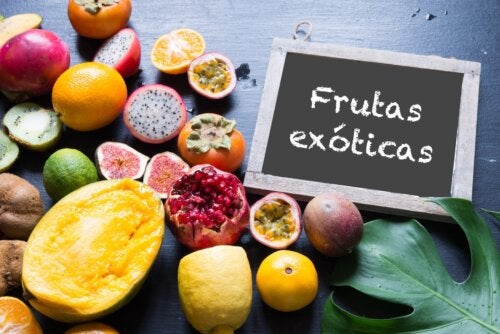

Written and verified by the nutritionist Anna Vilarrasa
Exotic fruits often come from distant countries or from a climate that’s very different than the one we’re used to. For this reason, tasting this type of fruit is a way to travel through taste, smell, and color.
Some are already well-known around the world, such as pineapple, coconut, or avocado. On the other hand, there are other more local varieties with curious shapes and textures.
Do you want to know some of them, how to eat them, and what properties or nutrients they provide? We tell you more about them below!
10 curious and exotic fruits
As we have just seen, the term exotic fruits is used to designate all those fruits that are not usually common in the countries where we live.
Many come from tropical and subtropical countries, since this type of climate favors the growth of a large number of different species and varieties.
A few decades ago, they could only be consumed locally. For this reason, it was the local population and travelers who were delighted with all the nuances and surprises that exotic fruits can offer.
Today, however, thanks to increased demand and the expansion of trade, it’s more common to find them in markets in more countries. So maybe you can have the opportunity to recognize and taste some of the 10 specimens that we’re going to tell you about below!
1. Carambola
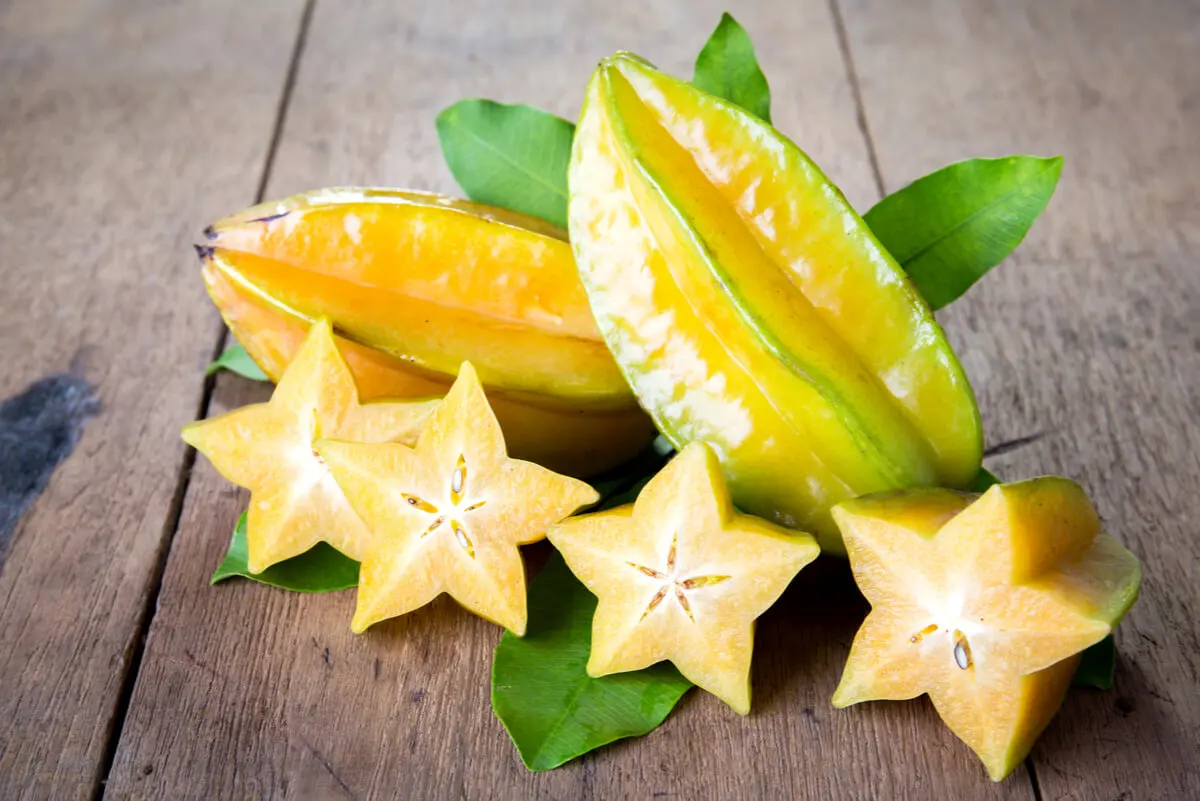
Native to Indonesia, Malaysia, and the Philippines, it’s one of the most beautiful exotic fruits we can find. Its fruit is small, oval-shaped, and yellow in color.
It has a sour to sweet taste and a firm, crunchy texture. It can be eaten whole, although, once cut, it has a nice star shape. This makes it a perfect decorative element in green salads, garnishes, or fruit salads.
Thanks to its carotene content, it’s a very suitable fruit for skin health. As suggested by Zerres and Stahl, this compound has the ability to take care of its moisture content, elasticity, and texture.
Like this article? We think you may also like to read: Benefits of Yuzu: A Japanese Citrus Fruit Packed With Vitamin C
2. Exotic fruits: Jackfruit
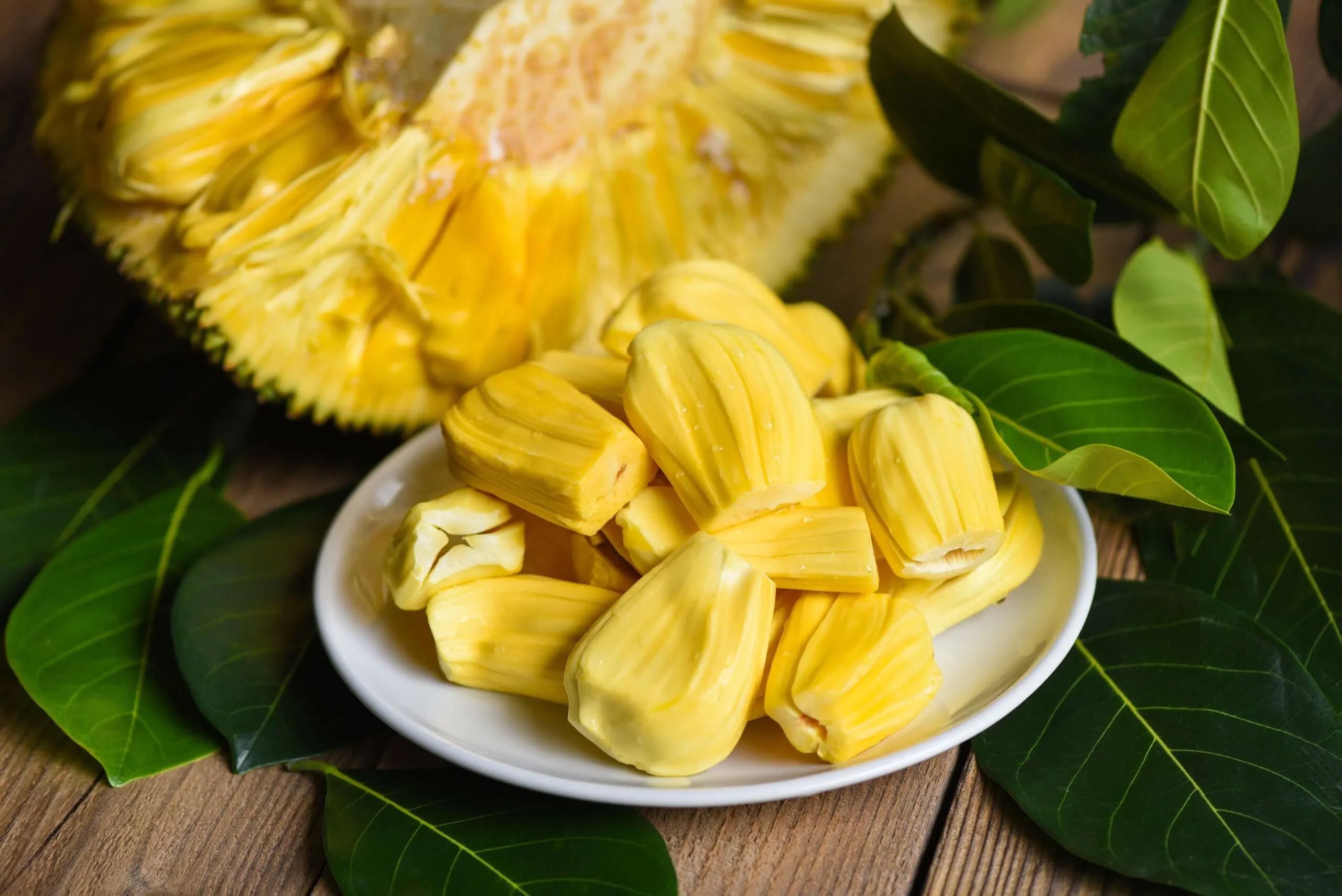
Also known as jackfruit, it comes from Malaysia and India. In other Asian countries, such as Sri Lanka and Bangladesh, it’s consumed in abundance and has been an important source of nutrition in times of scarcity.
The jackfruit tree produces very large fruits, which can weigh more than 20 kilos.
The edible part is the pulp, which changes from white to orange as it ripens. It also acquires a sweeter flavor, which some relate to banana or mango.
But it’s thanks to its texture that the consumption of this specimen is booming. It has a consistent pulp and frays easily, so it’s been used in recent years as a meat substitute in vegetarian dishes.
3. Soursop
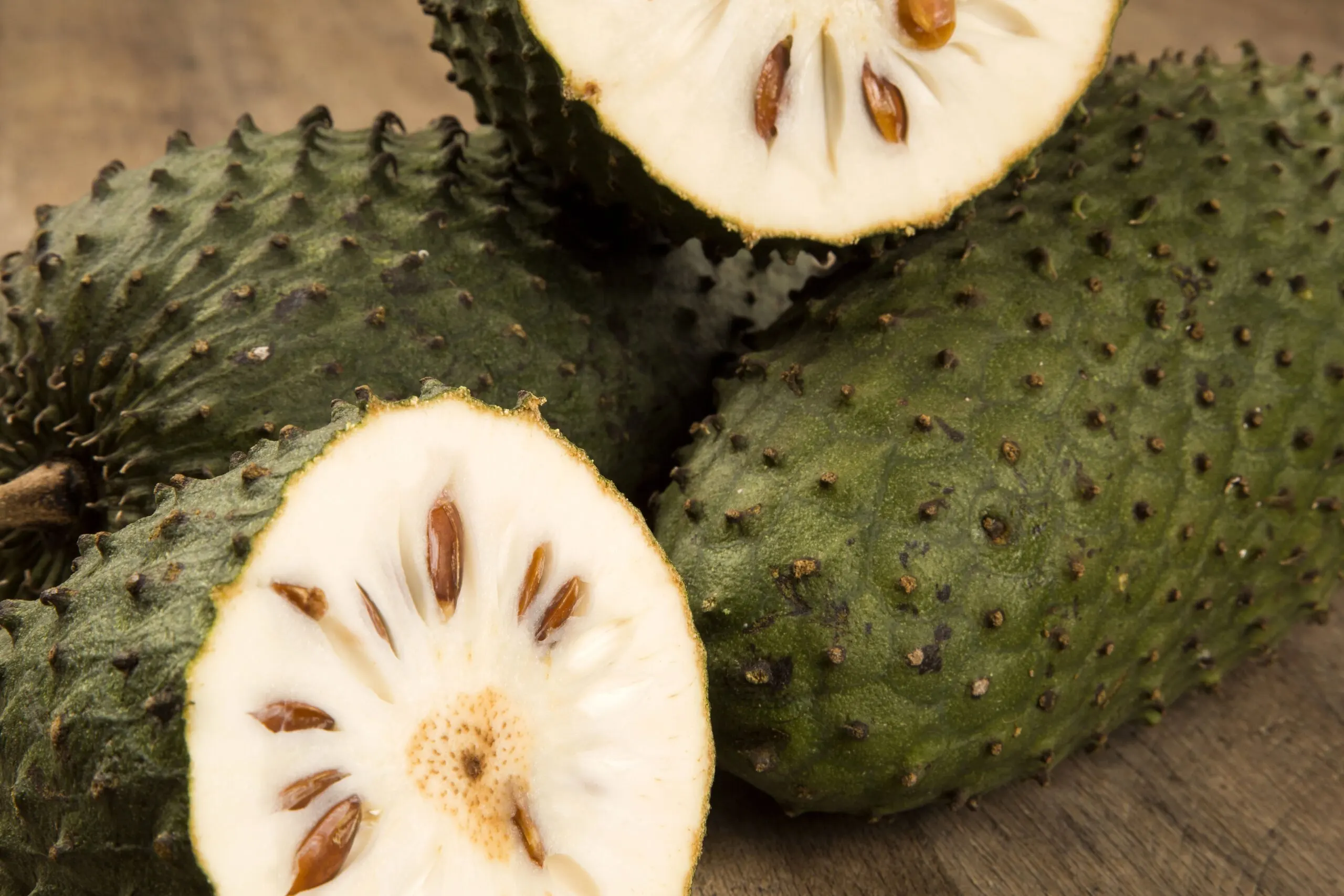
Soursop is a tree native to the Caribbean and Central America, but today, its cultivation has spread to other territories.
Its fruits are dark green, oval-shaped and have an acidic and aromatic pulp. It can be consumed alone or used in preparations such as smoothies, desserts, and ice cream.
According to data published in Molecules, this fruit can help to improve diarrhea episodes. In addition, it’s also suitable for those suffering from gastritis and gastric ulcers.
4. Mangosteen
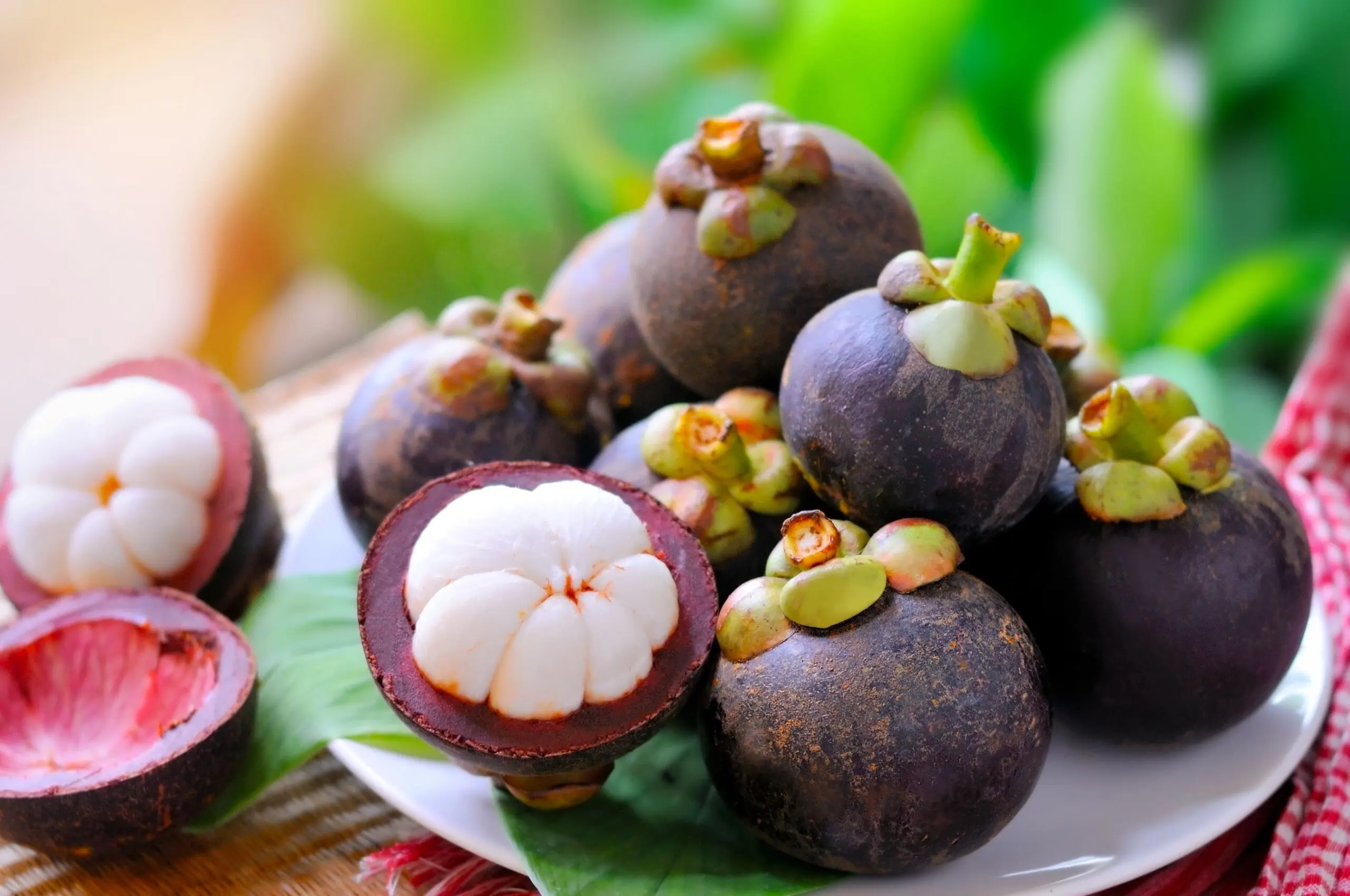
Born from the Garcinia mangostana tree, this is one of the most marketed exotic fruits as a nutritional supplement. It can be found in the form of juices and other types of beverages.
The presence of xanthones has put it in the spotlight of scientists in order to develop new drugs for chronic and degenerative diseases. This can be read in an article published in Food and Chemical Technology.
The fresh fruit has a medium size and its skin is purple. At the time of choosing it, the latter should be shiny, firm, and without many bruises.
To eat it, it’s cut in half with a serrated knife without splitting it completely. Thus, the skin can be removed and the white interior is exposed. Its segments separate like those of an orange and can be eaten alone or added to juices and smoothies.
5. Kiwano
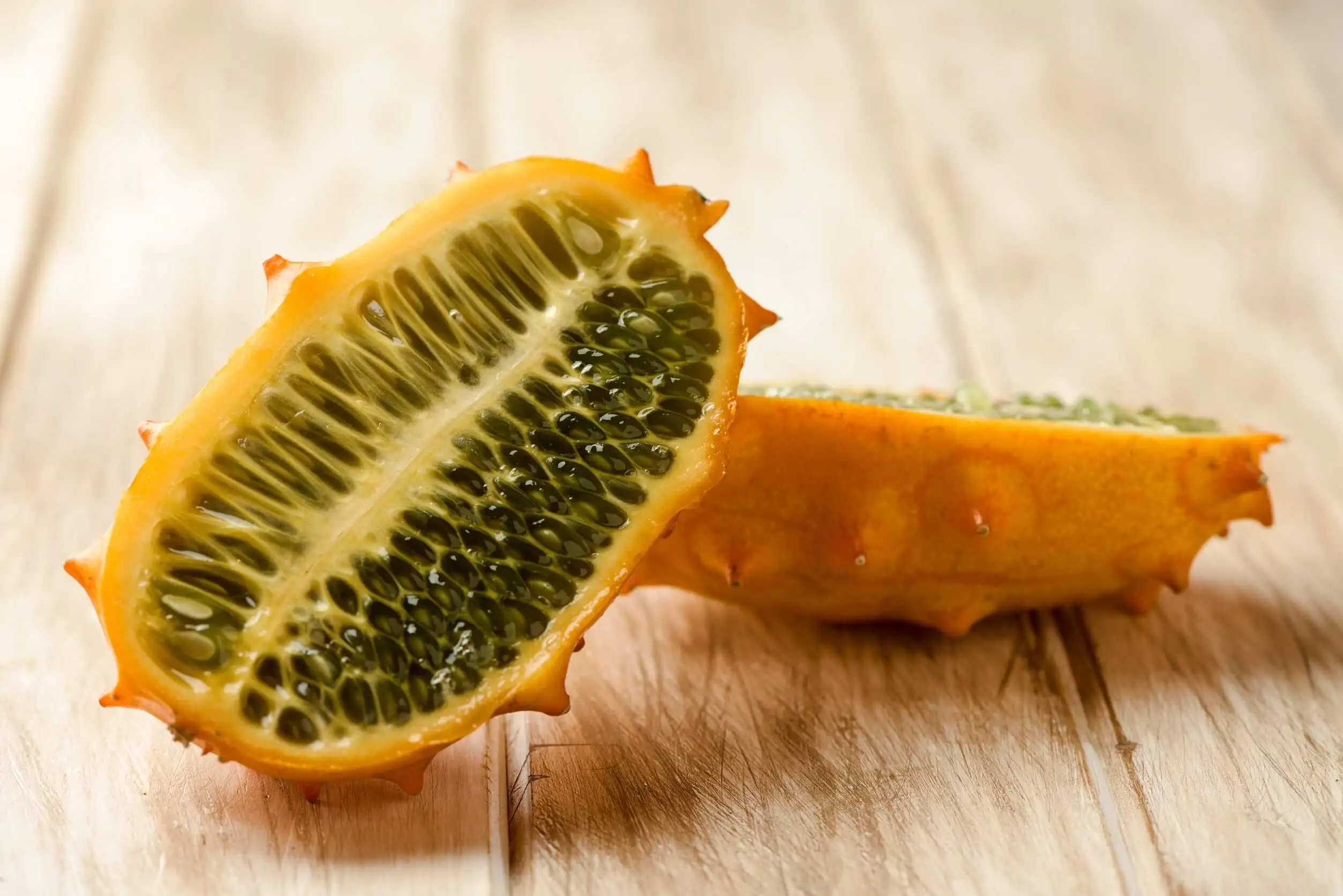
This fruit comes from Africa and belongs to the same family as cucumber and melon. In fact, it’s known by the names of horned cucumber or African melon.
When ripe it has green flesh with white seeds and its appearance is somewhat gelatinous. All parts of the melon are edible, although most people only eat the inside.
As reported in Processes, the kiwano is interesting for the number of minerals it provides: potassium, phosphorus, magnesium, calcium, iron, and zinc (among others).
It can be used in salads, fruit salads, or with yogurt. In addition, it’s also common to season it with a little sugar. Thus prepared, its flavor is reminiscent of a mixture of banana and kiwi. Care must be taken when peeling it, as its exterior is covered with small thorns.
You may also like to read this article: Acidic and Semi-acidic Fruits: What Are They and What Are Their Effects?
6. Buddha’s hand
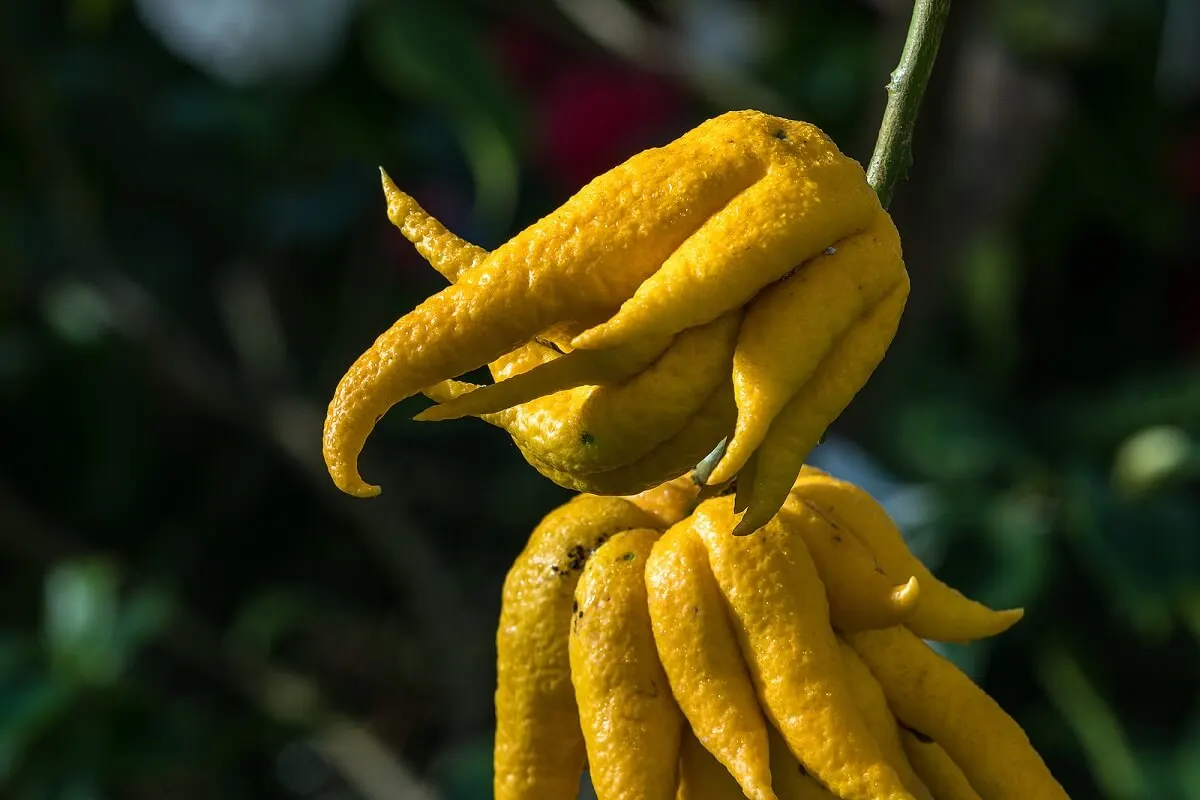
Without a doubt, Buddha’s hand is one of the most curious exotic fruits on the market. It’s a variety of citrus fruit that has the fruit separated into sections resembling the fingers of a hand.
Its use is also different from that of most fruits, as it has almost no pulp. In China and Japan, it’s used to scent clothes or houses and is one of the usual offerings to Buddha.
It shares the nutritional composition of other plants of the same genus. As can be read in the Journal of Epidemiology, it may be beneficial for our health, as it has been linked to a lower incidence of cardiovascular disease.
7. Pitaya
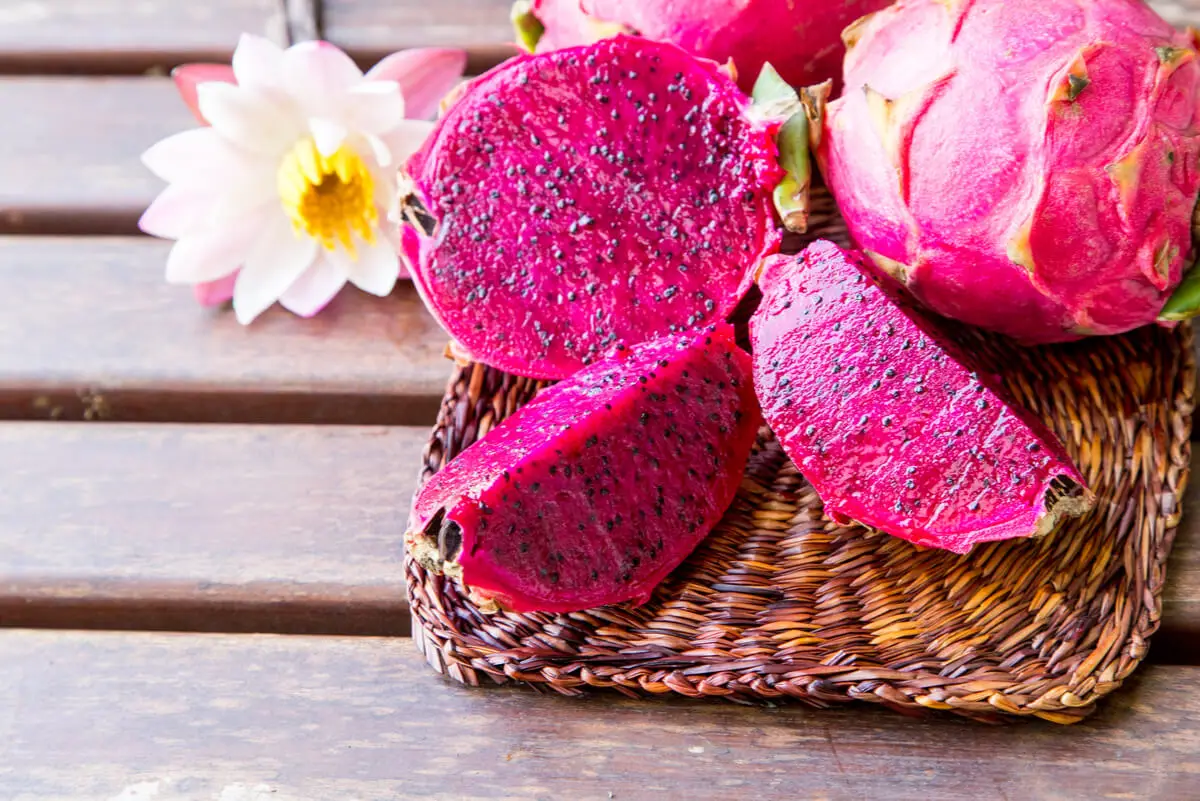
Known by the names dragon fruit or strawberry pear, this is a very striking fruit, due to its bright red color. Nowadays, it’s quite easy to find it fresh or frozen in markets in several countries.
Its nutritional composition stands out for the contribution of different antioxidant compounds, such as vitamin C and polyphenols.
According to the authors of an article published in Frontiers in Pharmacology diets rich in polyphenols can help to reduce the risk of suffering from certain diseases. These include cardiovascular problems, neurodegenerative diseases, cancer, diabetes, and inflammatory pathologies.
The skin of the pitaya is quite tough, but inside it hides a soft, sweet pulp full of edible seeds. This is eaten with the help of a spoon (like kiwi or avocado), although it’s also added to smoothies, fruit salads, and salads.
8. Rambutan
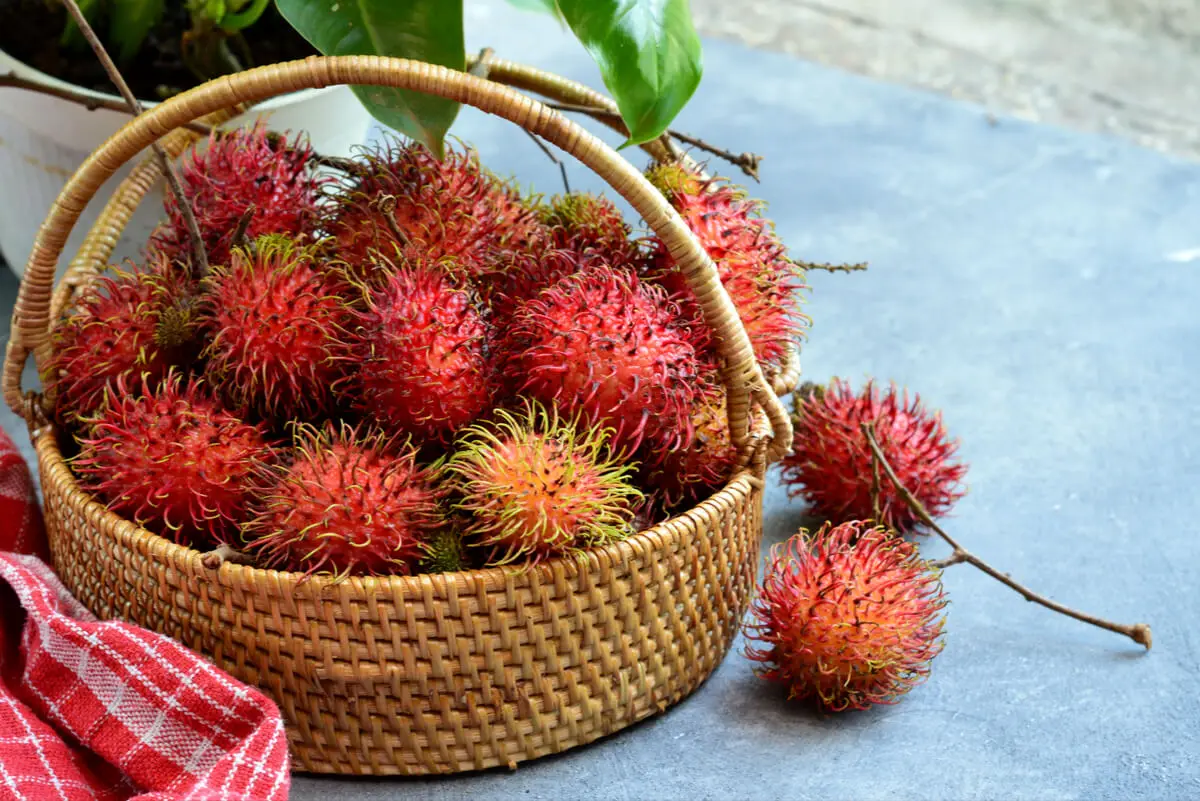
Native to Malaysia and Indonesia, it’s abundant in markets throughout Southeast Asia. It belongs to the same family as the lychee, another exotic fruit that is somewhat better known and also very healthy.
The rambutan is small, with a red, spiky outer skin and a white, creamy interior. It’s prepared in the same way as the mangosteen and is eaten as a table fruit or in fruit salads. In this case, the seeds must be removed.
It has a striking amount of antioxidants and can be considered a good source of vitamin C (similar to kiwi or orange).
As can be read in the page of the National Institutes of Health, this vitamin is necessary to produce collagen, to improve the absorption of iron, and for the normal functioning of the immune system.
9. Exotic fruits: Kumquat
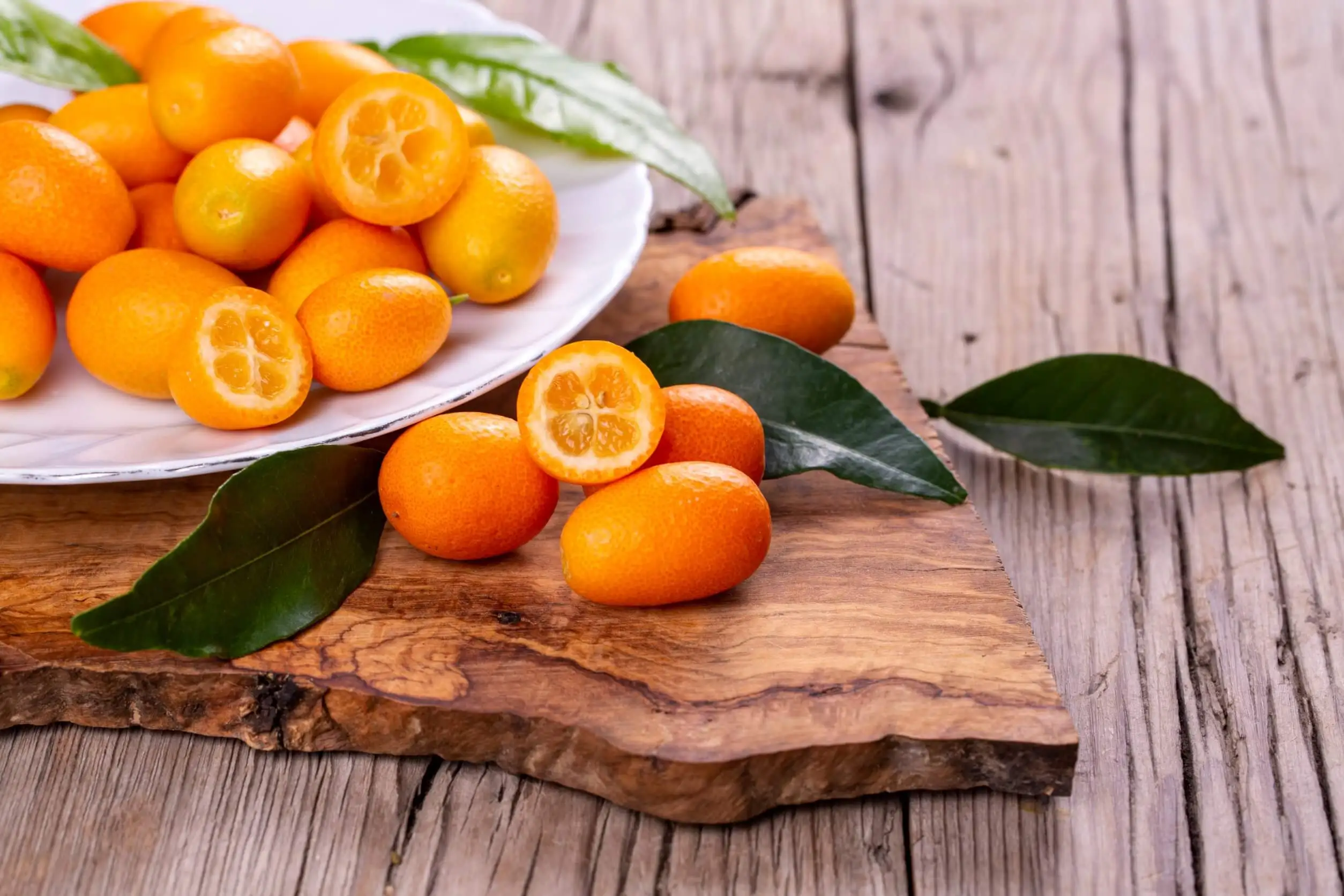
Hailing from China, the kumquat is a small fruit also known as a Chinese orange.
It can be enjoyed whole, as it’s the same size as grapes and its skin is edible. Unlike other citrus fruits (a group to which the kumquat also belongs ), the skin is rather sweet, in contrast to the acidic interior.
At a nutritional level, it stands out for its vitamin C, carotenes, pectins, and polyphenols. Thanks to all of these, it has a series of effects on the organism that are beneficial for cardiovascular health. According to the authors Liu, Lou, et al:
- Regulation of the expression of anti-inflammatory markers.
- Protection of the artery wall.
- Decrease in blood pressure.
You may also like reading: Different Stages of Fruit: Characteristics and Benefits
10. Durian
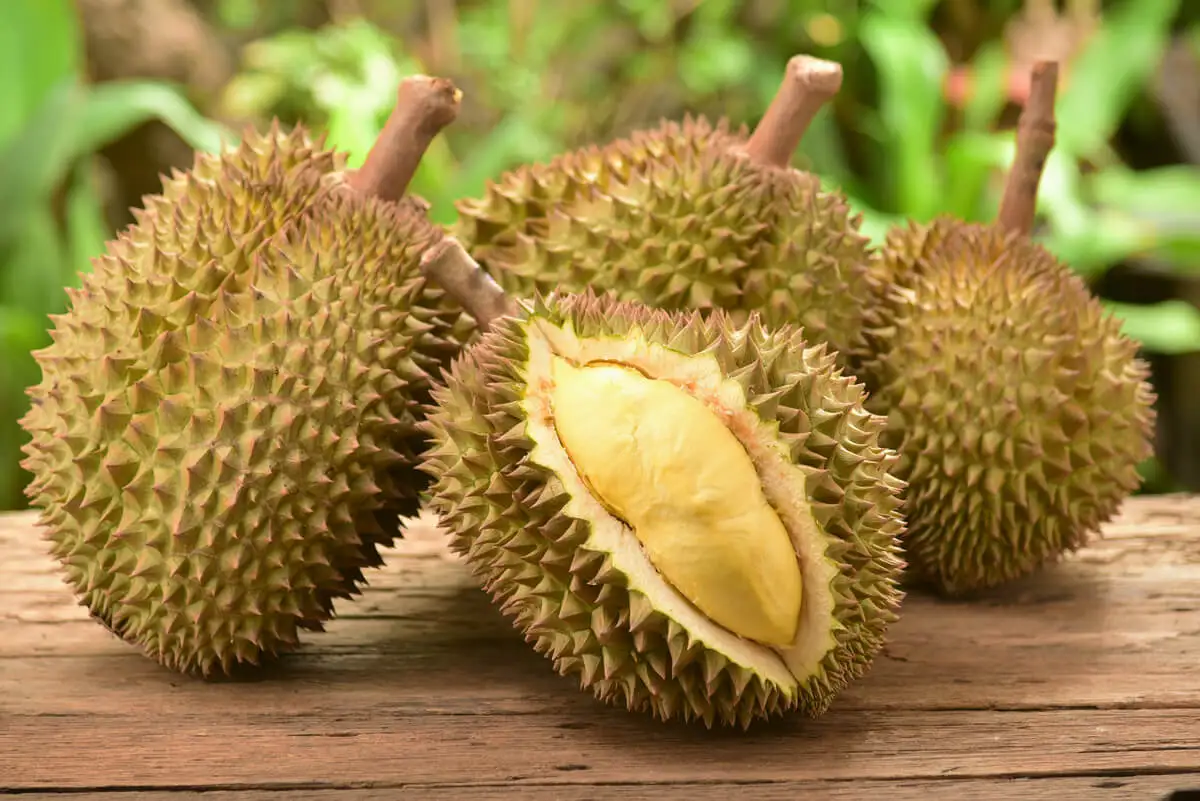
In last place, we have left this fruit that has earned the reputation of being one of the smelliest in the world. It’s quite difficult to find outside of its region of origin, but a trip to Thailand, Malaysia, or Singapore is perhaps worth a little tasting.
This, yes, the experience may only be suitable for the most daring. Although there are many varieties with different nuances (from the sweetest to the most bitter) its smell is almost unmistakable. So much so, that it’s becoming common to prohibit their entry in public transport and some hotels.
Did you know any of these 10 exotic fruits?
It’s possible that you have, since some of them can be found in very distant points of their country of origin.
Consuming fruits daily has many health benefits. They’re light, diuretic, provide fiber and a great amount of vitamins and minerals, among other nutrients.
Exotic fruits can be included among the recommended daily servings of this group. However, it should be remembered that it’s advisable to choose fruits that are in season and grown locally or as close to season as possible.
This doesn’t mean that you cannot try kumquat, pitaya, jackfruit, or soursop. But it’s best to do so from time to time and take advantage of trips to taste them.
All cited sources were thoroughly reviewed by our team to ensure their quality, reliability, currency, and validity. The bibliography of this article was considered reliable and of academic or scientific accuracy.
- Luo, X., Wang, J., Chen, H., Zhou, A., Song, M., Zhong, Q., Chen, H., & Cao, Y. (2020). Identification of Flavoanoids From Finger Citron and Evaluation on Their Antioxidative and Antiaging Activities. Frontiers in nutrition, 7, 584900. https://www.ncbi.nlm.nih.gov/pmc/articles/PMC7649818/
- Mutakin, M., Fauziati, R., Fadhilah, F. N., Zuhrotun, A., Amalia, R., & Hadisaputri, Y. E. (2022). Pharmacological activities of soursop (Annona muricata Lin). Molecules. 27 (4): 1201. https://www.ncbi.nlm.nih.gov/pmc/articles/PMC8878098/
- National Institutes of Health. Office of Dietary Supplements. (2019, 18 de diciembre). Vitamina C. https://ods.od.nih.gov/factsheets/VitaminC-DatosEnEspanol/
- Ovalle-Magallanes, B., Eugenio-Pérez, D., & Pedraza-Chaverri, J. (2017). Medicinal properties of mangosteen (Garcinia mangostana L.): A comprehensive update. Food and Chemical Toxicology, 109 (1), 102-122. https://pubmed.ncbi.nlm.nih.gov/28842267/
- Paśko, P., Galanty, A., Zagrodzki, P., Luksirikul, P., Barasch, D., Nemirovski, A., & Gorinstein, S. (2021). Dragon Fruits as a Reservoir of Natural Polyphenolics with Chemopreventive Properties. Molecules (Basel, Switzerland), 26(8), 2158. https://www.ncbi.nlm.nih.gov/pmc/articles/PMC8070077/
- Rudrapal, M., Khairnar, S. J., Kahn, J., Bin Dukhyil, A., Azam, Ansari, M., Alomary, M. N., Alshabrmi, F. M., Palai, S., Kumar Deb, P., & Debi, R. (2022). Dietary polyphenols and their role in oxidative stress-induced human disease: insights into protective effects, antioxidant potentials and mechanism(s) of action. Frontiers in Pharmacology. 13. https://www.frontiersin.org/articles/10.3389/fphar.2022.806470/full
- Seregelj, V., Sovljanski, O., Tumbas Saponjac, V., Vulic, J., Cetkovic, G., Markov, S., & Canadanovic-Brunet, J. (2022). Horned melon (Cucumis metuliferus E. Meyer ex. Naudin). Current knowledge on its phytochemicals, biological benefits and potential applications. Processes, 10 (1), 94. https://www.mdpi.com/2227-9717/10/1/94
- Tsong, J. L., Goh, L. P. W., Gansau, J. A., & How, S. E. (2021). Review of Nephelium lappaceum and Nephelium ramboutan-ake: A High Potential Supplement. Molecules (Basel, Switzerland), 26(22), 7005. https://www.ncbi.nlm.nih.gov/pmc/articles/PMC8620321/
- Yamada, T., Hayasaka, S., Shibata Y., Ojima, T., Saegusa, T., Gotoh, T., Ishikawa, S., Nakamura, Y., & Kayaba K. (2011). Frequency of citrus fruit intake is associated with the incidence of cardiovascular disease: the Jichi Medical School Cohort Study. Journal of Epidemiology, 21 (3), 169-75. https://pubmed.ncbi.nlm.nih.gov/21389640/
- Zerres, S., & Stahl, W. (2020). Carotenoids in human skin. Biochimica et Biophysica Acta (BBA). Molecular and Cell Biology of Lipids, 1865 (11), 158588. https://www.sciencedirect.com/science/article/abs/pii/S1388198119302392
- Bhumsaidon A, Chamchong M. Variation of lycopene and beta-carotene contents after harvesting of gac fruit and its prediction. Agricultural and natural resources. Julio 2016. 50(4):257-263.
- Dreher ML, Davenport AJ. Hass avocado composition and potential health effects. Critical Reviews in Food Science and Nutrition. Mayo 2013. 53(7):738-750.
- García-Cruz L. et al. Betalains and phenolic compounds profiling and antioxidant capacity of pitaya (Stenocereus spp.) fruit from two species (S. Pruinosus and S. stellatus). Food chemistry. Noviembre 2017. 1;234:111-118.
- Katibi OS, et al. Ackee Fruit Poisoning in Eight Siblings: Implications for Public Health Awareness. American Journal of Tropical Medicine and Hygiene. Noviembre 2015. 93(5):1122-1123.
- Raddatz-Mota D, et al. Achiote (Bixa orellana L.): a natural source of pigment and vitamin E. Journal of Food Science and Technology. Mayo 2017.54(6):1729-1741.
- Ranasinghe RASN, Maduwanthi SDT, Marapana RAUJ. Nutritional and Health Benefits of Jackfruit (Artocarpus heterophyllus Lam.): A Review. International Journal of Food Science. Enero 2019.4327183.
- Silva Cadena R. A review of the fruit nutritional and biological activities of three Amazonian species: Bacuri (Platonia insignis), murici (Byrsonima spp.), and taperebá (Spondias mombin). Fruits. Octubre 2017. 72(5):317-326
- Yıldız G, et al. Physical and chemical characteristics of goldenberry fruit (Physalis peruviana L.). Journal of Food Sciences and Technology. Febrero 2015. 52(4):2320-2327.
This text is provided for informational purposes only and does not replace consultation with a professional. If in doubt, consult your specialist.








